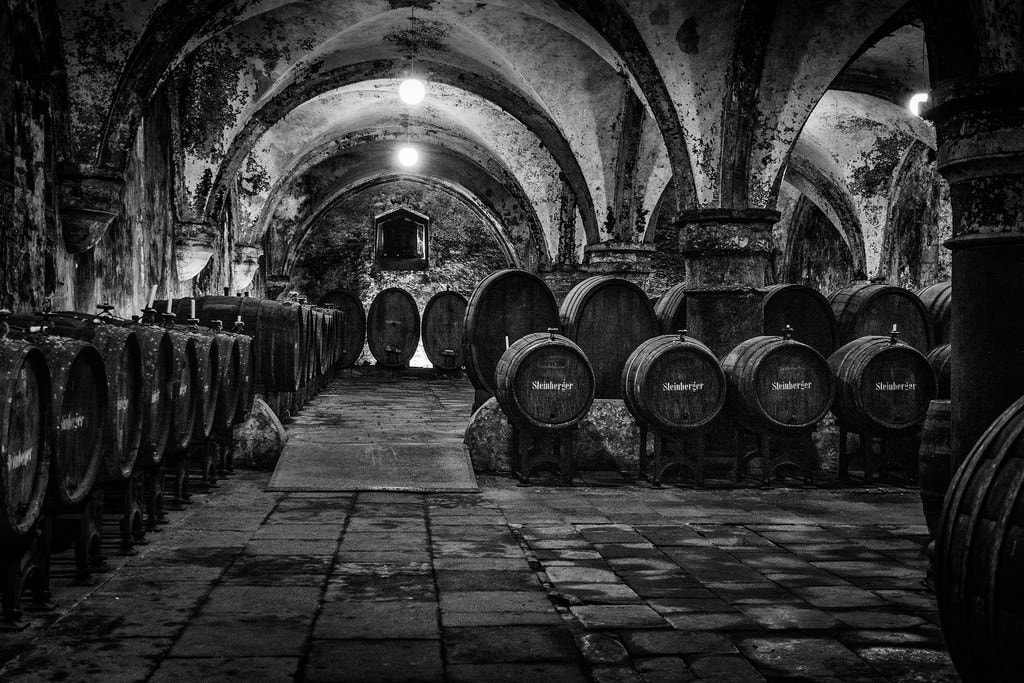WINE BLOG

Spit Happens #33 The concept of lightstrike plus a wee joke
A woman was driving home in Northern BC, when she saw an elderly woman walking on the side of the road. She stopped the car and asked the woman if she’d like a ride. The woman thanked her and got in the car.
After a few minutes, the woman noticed a brown bag on the back seat and asked the driver what was in the bag. The driver said, “It’s a bottle of wine. I got it for my husband.”
The woman thought for a moment, then said, “Good trade.”
The topic of todays post is lightstrike . As the wine industry starts to deal with issues relating to corked bottles and temperature control in shipping/storage and retail we now have a new issue to deal with. Lightstrike is an issue related to wines that have been exposed to blue and ultraviolet light which eventually converts amino acids into unpleasant smelling compounds like dimethyl disulhpide. The fruit is initially muted in the glass and then finally becomes overwhelmed by flavors and aromas of cooked vegetables, wet cardboard ( which many times is then perceived as cork taint ) or an almost gamy animal poo smell. Sounds delicious doesn’t it.

Conventional wisdom dictated that light was the enemy of wine. Which is why stand alone cellar units often have dark glass doors. The image of the dark dank subterranean wine cellar certainly comes to mind. There is a reason port is in a super dark glass bottle. Generally amber glass filters out most of the bad stuff ( ninety percent) green glass fifty percent and clear less than ten percent. Think about all the Sauvignon Blanc Semillon and rose in clear glass and it starts to become a bit more obvious where the risks are.
It’s very likely that your wine can be damaged at a retailer on in a restaurant setting if they are not on their game. Sunlight and florescent bulbs are the worst offenders. Think back to the time you put your beer in the lake on a hot sunny day. The lake was cold but the sun made the beer taste skunky and nasty. LED bulbs can also cause some issues but it’s a more limited issue. I’m thinking a wine spending weeks on the shelf of a supermarket will result in a sub optimal performance. The problem is exacerbated by the fact that all wines in a case are exposed to this risk unlike cork taint which has a lower percentage risk.
So what can you do ? In an ideal world you would buy full unopened cases and bring them home at night and place them in your dark cellar. This isn’t always the case but you can always ask a trustworthy employee how long a wine has been on display. Also don’t buy wines that have been displayed in direct sunlight. I stopped buying wine from a retailer in Seattle a number of years ago for exactly that reason, all the good stuff was in a south facing portion of the store exposed to direct sunlight.
If you wish to display your collection in your fancy new cellar pick the dark bottles or those wrapped in tissue for the most exposed portions of your cellar.
PS If you want to know the name of the Seattle retailer you can email me at davidlancelot71@gmail.com
Thanks for your time.
If you have any feedback we would love to hear from you on our Facebook page. https://www.facebook.com/winecellardepot/ .
Also check out our Houzz Page for design ideas and planning.
http://www.houzz.com/pro/winecellardepot/wine-cellar-depot
